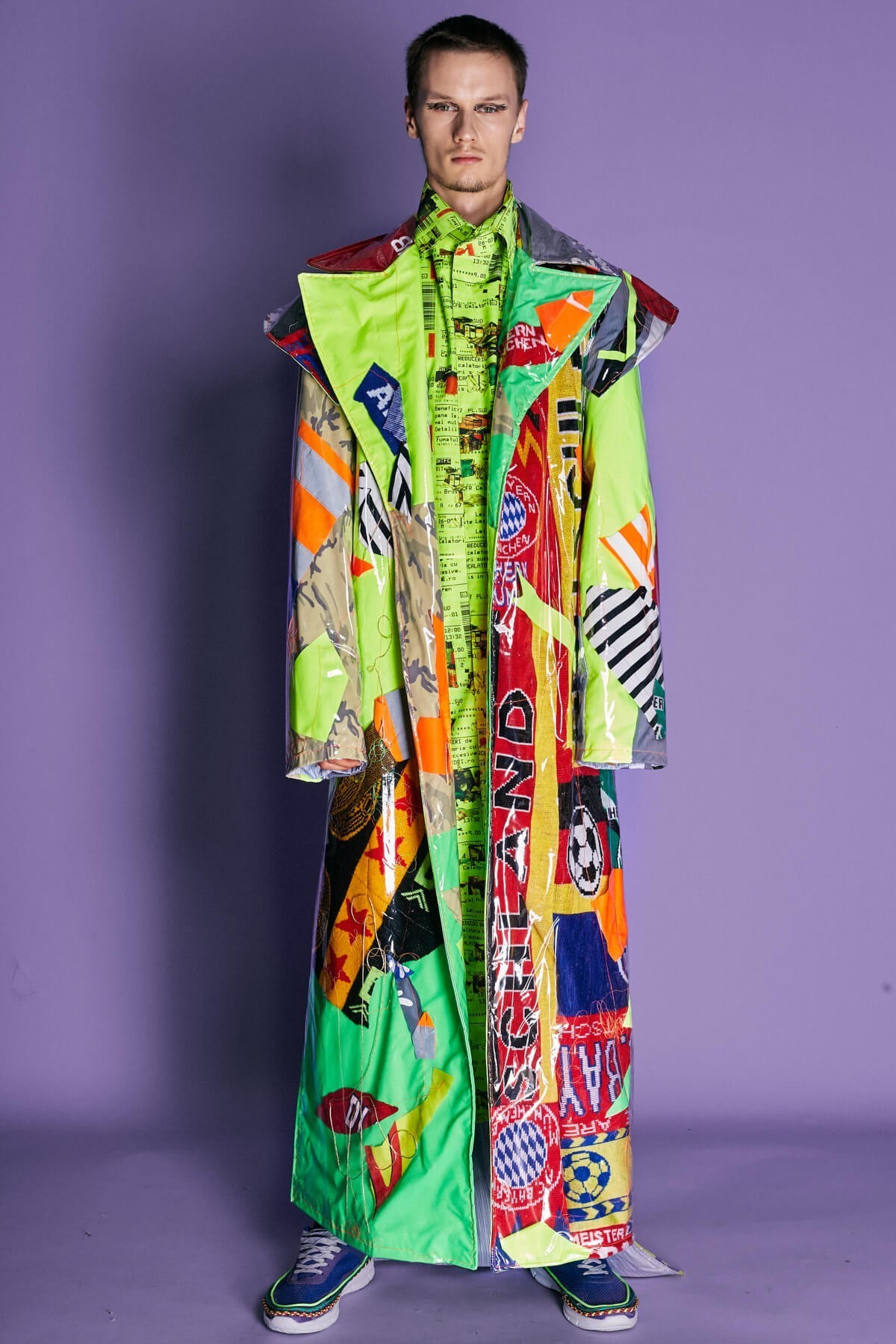Favourite Piece

My Favourite Piece: Ferencz Borbala
Why did you choose this piece?
I chose this piece because it is a statement piece, an upcycled patchwork coat, made of second-hand football scarves and other leftover materials. Based on the “more is more” philosophy, second-hand clothes are upcycled and given a new preciosity. The exaggerated amount of logos and graphics are a reflection on today’s information overload and the negative aspects of the fashion industry and the whole consumerist society.

What makes it stand out amongst the collection?
It is made of football scarves, which are intentionally very easily recognizable. You can also get an insight in my working process through this coat, how damaged clothes and shreds can became something else. Handmade, unique details are traditionally giving value to a product. I’m adding these values to textile waste, trying to transform them back into precious material. This coat is entirely made from the leftovers of the fashion industry, but with high-end finishing and precious unique details.

Explain the origins of the design. What were your initial inspirations?
Our world is facing a huge pollution crisis. The fashion industry itself is creating more and more waste each year. To change this, we need to change the whole philosophy behind our production and consumption. Before the industrial revolution, clothes were made in a completely different spirit than today’s fast fashion items. That is why the silhouettes of the outfits have an inspiration from royal garments of the 16th and 17th centuries.

Why did you choose the specific fabrics, patterns, colors?
I chose colorful fabrics with strong graphics. The freshness of bright neon colors is mixed with darker, faded antique ones. I found a lot of football scarves, safety vests, and other sportswear in the local second-hand stores. I cut them into pieces and I made playful, chaotic textile collages of them using some words or just letters or logos. Also added some other found objects like chains and pieces of old jewelry.
 Image: Designer Ferencz Borbala
Image: Designer Ferencz Borbala
What is the story of this piece and how does it work to tell your collection's overall story?
The collection is based on several contrasts: precious and cheap, new and old, historical and contemporary, organized and unorganised. With its oversized shoulder flaps and wide peak lapels, the coat has a rigorously constructed, historical silhouette. Combined with the playful textile collages, it looks like a strange wearable pile of clothing. With this uncanny combination of precious elements and forms with damaged goods, I aim to question the way we consider something valuable.













